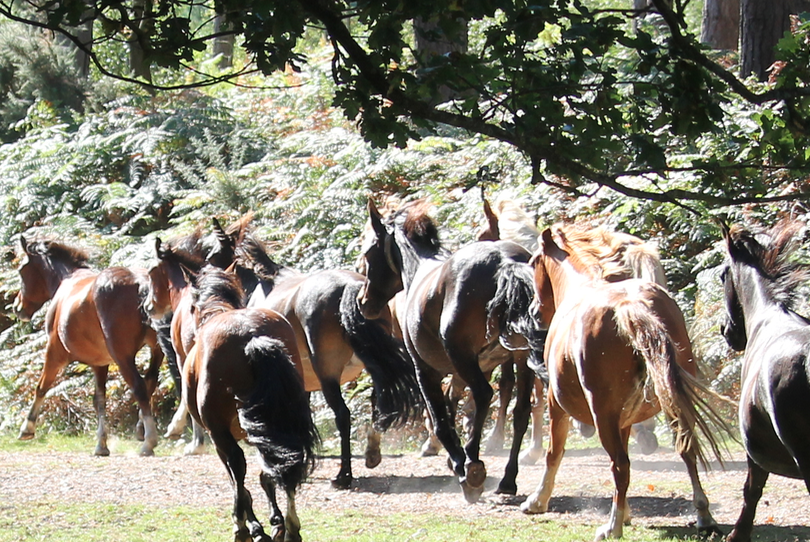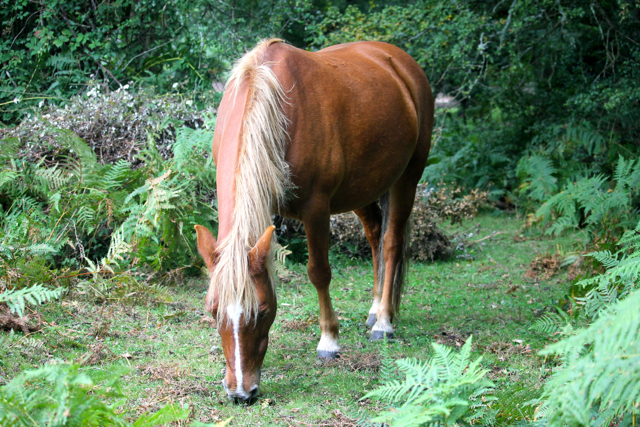
Only registered, licenced stallions are permitted to run with the free-roaming New Forest mares.
In early March 1887, the Verderers Court met to discuss Forest issues, chief among these was how best to improve the breeding of New Forest ponies with special reference to the procuring of stallions, purchased by the Verderers, for use on the Forest mares. The Clerk reported that some twenty or thirty commoners had written to him with reference to the question of supplying a stallion for the Forest, and asking the Court to consider the matter. According to the Agisters, who are the specialist stockmen employed by the Verderers, not only was there a scarcity of stallions in the Forest at that time, but they did not know of a good one among them. Colonel Esdaile believed that as the scheme would benefit the commoners he did not see any reason for the Verderers not to pay for it, but stated that stallions from the Forest that were below a certain standard would have to be excluded first. The idea was that four stallions would be purchased and turned out on the following year. A general discussion ensued about the merits of the various pony breeds that might be bought. The Clerk stated that some of the commoners believed that the stallions should be purchased in Wales. Col. Esdaile said that he believed a good selection could be found in Cumberland. He had his eye on one, he said, which had extraordinarily good shoulders, and was what they wanted. In his opinion they could have four short-legged, fine-shouldered ponies. (Col. Esdaile is describing the important qualities necessary in a good a harness-horse, which is what the New Forest ponies would have been primarily used for.)
Pony-buying spree
It was generally agreed that previous attempts to introduce thoroughbreds into the New Forest breed had been useless, and that if commoners wanted thoroughbreds they would have to do so at their own expense. For their pony-buying spree the Verderers wanted a breed that could not only improve the Forest pony but cope with the Forest environment. George Edward Briscoe Eyre suggested that the Court ought to consider the Corsican pony, which he said was wiry and a good worker. To which Mr W G Roy replied, that they might go a little further, and as the Corsican pony lived on rocks they might have a stallion, which lived on nothing – have an Arab, which lived in the Desert. However, after some debate the conclusion of the meeting was found in favour of Welsh ponies, and it was agreed to purchase four. The decision as to whether the stallions were to be turned out on the Forest was postponed until the matter could be discussed at length with the Agisters. Today, of course, the management of the New Forest pony breed is taken much more seriously and, while its lineage does contain other native British breeds only purebred, registered New Forest stallions are now permitted to roam the Forest. The Verderers, nevertheless, remain actively involved in promoting projects to sustain commoning and livestock in the New Forest and still support schemes to protect and maintain New Forest pony bloodlines. I am curious to discover if, during my research, I can find out what happened next and whether the Welsh stallion were purchased or not.

New Forest ponies are adapted to cope the demands of a free-roaming existence.


You must be logged in to post a comment.